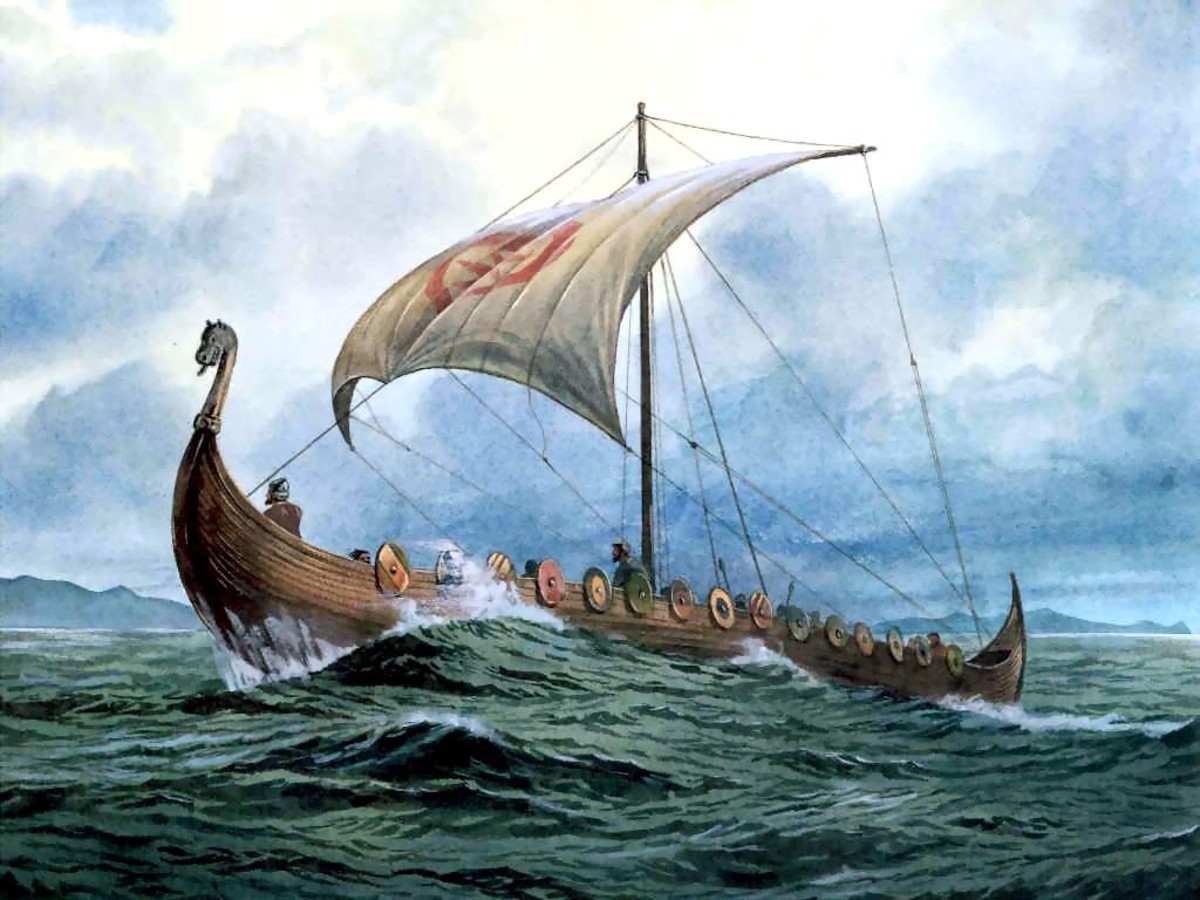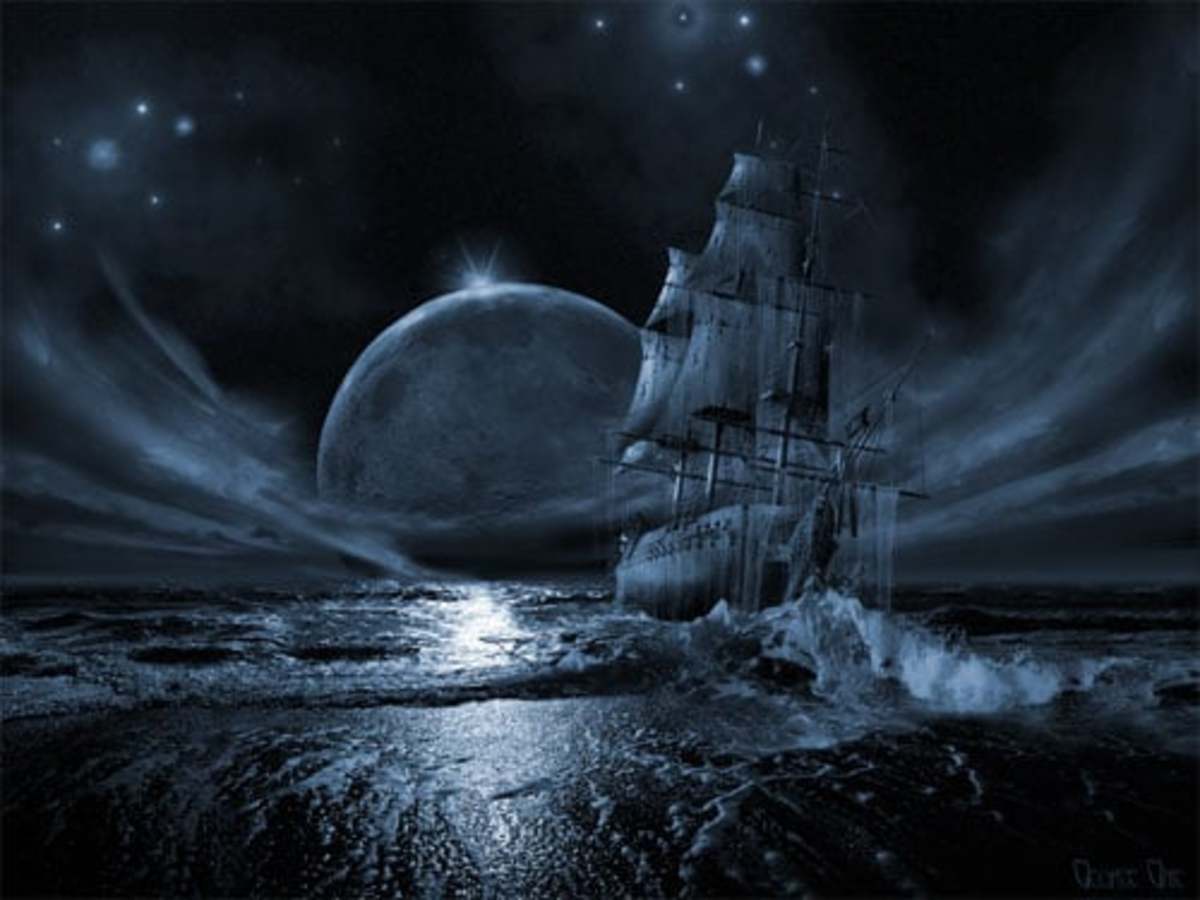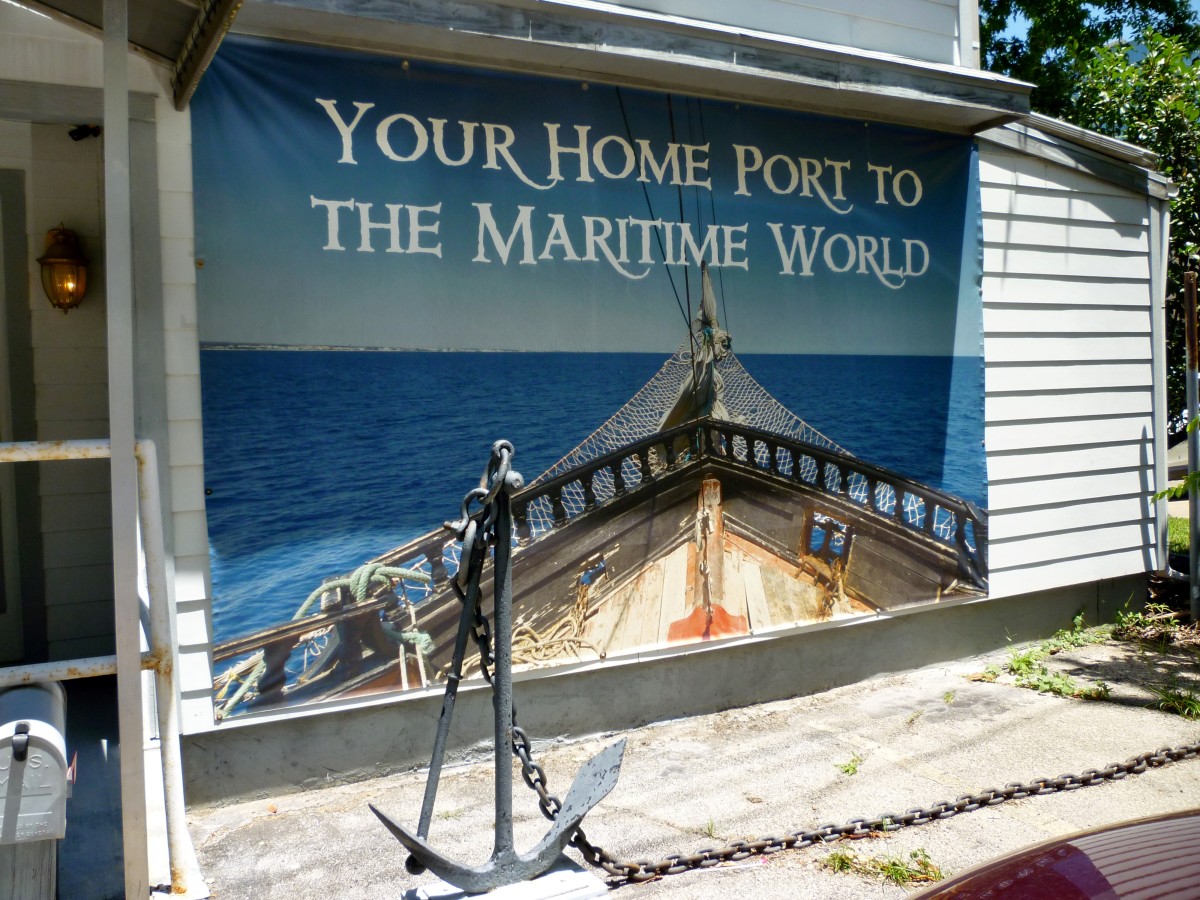Famous Clipper Ships and Clipper Ship History
Clipper Ships
Clipper ships are a fascinating study as from the start they're impossible to define, as there is no specific definition or parameters that specifically identify what it exactly was.
Most of those who study these things appear to agree the one element that clipper ships had was they were a vehicle built for speed, against a more bulky cargo ship.
Even the exact period of time clipper ships were introduced isn't agreed upon, although most are in agreement that the ships became obsolete with the opening of the Suez Canal in 1869, which allowed the steam ships to compete with their faster Clipper competitors.
When at the height of their usefulness, Clipper ships were the best on the longer journeys because the steam ships had to continually refuel, making them much slower in comparison, although this is even disputed by experts. The contradiction probably comes from the conditions the Clipper ships faced, as far as cooperation of the winds.
To add more complexity to the matter, there were Clipper ships built for different reasons, with some being much faster than other, e.g. tea carriers versus wool carriers. It was also less costly with the wind being the source of energy; although larger crews were needed to get the most speed out of them.
Interestingly, as the age of Clippers began to dawn, some 'hybrid' Clipper ships were created which included steam and sails.
Clipper Ship Demand
Demand for Clipper ships was driven by several factors. There was the tea trade, which was also considered, possibly, the sporting event of the day, with people cheering on their favorite ship concerning who would arrive with the tea at port first.
Australia was known for its wool-carrying Clippers, for obvious reasons. These ships were much slower than their tea-carrying counterparts.
Gold Rush
The California gold rush in the mid 1800s were a major impetus for the Clipper ship trade, as people from around the world wanted to get there as quickly as possible to stake their claims.
One little known fact about this part of Clipper ship history, is not only did the people experiencing gold fever leave the ships when they arrived, but the entire crew would desert the ship as they searched for their fortune, which for the most part, never came for the majority of the gold miners.
Southern Cross Clipper Ship
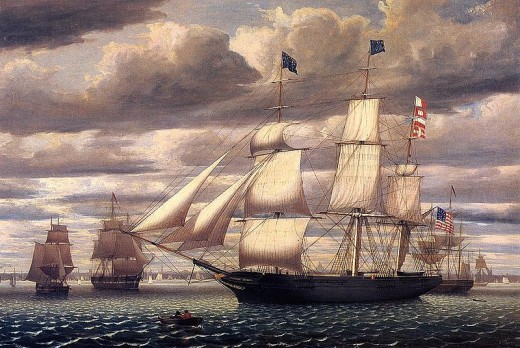
Tea Races to England
As mentioned, the China tea trade was an enormous event in that period of time, and ships, ship captains, and the crew, were the sports stars of that day, with enormous prestige coming to those who would be the first, or among the first, to deliver the first tea of the season to the area.
Only the fastest of the Clipper ships were chosen to make these trips, and the winners were celebrities and heroes of that day. A winning ship and captain would have possibly been viewed in same way a winning and popular sports team of today is with its manager.
Clipper Ship Speed
Under optimal conditions, Clipper ships were the fastest ships on the water, especially those built specifically for the tea trade.
The introduction of the steam ship posed a real threat to the industry, and so engineers of that time worked on making the Clippers even faster. Even so, under the best weather conditions, Clipper ships would make up to about 16 knots.
When measured against steamships, this was superior of course, but the key was what the speed was over a long journey.
One example is the famous Clipper ship the Cutty Sark. When it achieved its record 71-day journey from Australia to England, its average speed was only 8 knots.
It was a give and take, as the steam ships had to dock more to refuel, but the Clipper ships could face calm seas, which slowed their potential down.
Famous Clipper Ships
There are a number of Clipper ships that are very well known, some for their performance, others for no other reason than being captured in a war, or sinking to the bottom of the sea and later being discovered.
Some ships were famous for being the largest or being the fastest; something we humans enjoy statistically.
Now we'll look at several of the more well-known ships; both by the general public and those fans of the history of these magnificent creations.
Preussen: The Largest Clipper Ship in History
Built after the age of Clipper ships was largely over, and being a hybrid; utilizing steam power as well, the Preussen is still considered the larger Clipper ship in history.
As with other Clipper ships, there are some descrepencies as to the actual dimensions of the Preussen. Part of that is the way it is being measured. For example, there is a measurement described as length 'overall' and another as 'hull' length.
When measured by length overall, it is a reference to the longest part of the ship's two points on the hull measured perpendicular to the waterline.
Under most circumstances it is the length overall that reflects the true length of a ship, although many of those not familiar with the terminology and industry, will use the hull length measurement to describe the length of the ship.
Having said all that, there have been different numbers thrown out as to the hull length as well. As measured in feet, I've never seen it described as reaching 440 feet. The measurement is usually listed as just under that measure. The overall length is listed at about 482 feet by most. The Preussen also had five masts, as you can see in the photo below.
When analysing the speed of the ship in 1905, Captain M. Prager estimated the average to be 13.7 knot in a force 8 wind "backstags" or 9-15 points from the wind.
The giant ship lasted for only 14 voyages, as it was hit by a small steamer named the Brighton on November 6, 1910. After attempts by tug boats to pull the Peussen to safety, a gale hit the area and broke the anchor chains, pushing it into the rocks of Crab Bay, where it ultimately sank. In low tides in the spring season, some ribs of the Preussen can still be seen emerging from the waters.
Preussen
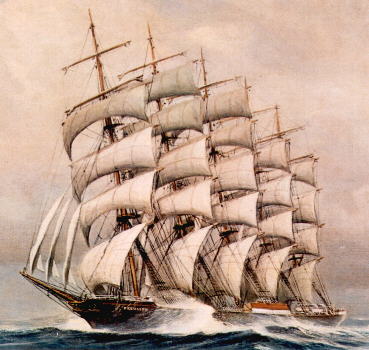
Red Jacket Clipper Ship
The Red Jacket was the fastest Clipper ship of its day, soaring across the Atlantic ocean in a record time of 13 days, one hour, twenty five minuets; an extraordinary achievement for that time.
An Indian Chief of the Seneca tribe named Red Jacket, is the source of the name of the Clipper ship. His name, in turn, came from his wearing a red coat. He did that because of his ongoing allegiance to the British during the Revolutionary War.
The record speed was accomplished on the maiden voyage of the Red Jacket, when Captain Osa Eldridge left Sandy Hook, NY on January 11, 1854.
It didn't look like there would be any such record achieved at the beginning of the journey, as the ship encountered stormy weather, averaging only about 182 nautical miles a day for the first seven days.
After that, for the next six days the ship averaged an amazing 353 nautical miles a day, resulting in the record time.
As with many of the Clipper ship captains of that day, Eldridge received a hero's welcome when head brought the ship safely into port in Liverpool, after sailing her up the Mersey River.
Eldridge eventually perished on another ship in 1855, when sailing as Master of the Pacific in the Far East trade. He turned over command of the Red Jacket to Captain Samuel Reid before that fateful journey.
The ship was reportedly 260 feet long, with a 44 foot beam, according to a book by author Arthur H. Clark, called “The Clipper Ship Era,” published in 1910. Clark listed the tonnage as 2006 tons, while other sources claim the tonnage was 2305 tons.
Amazingly, to this day the record for the fastest trans-Atlantic crossing by a commercial sailing vessel is still held by the Red Jacket.
Red Jacket
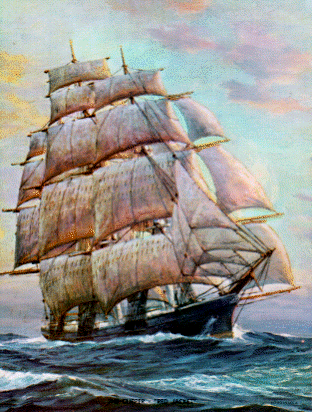
Clipper Ship Smyrna
Smyrna is an interesting Clipper ship, because its notoriety is based upon being found many years after it sunk, and is a favorite of sunken ship divers.
The Smyrna was completed in 1876 (others say 1879), built to be a wool Clipper ship carrying cargo between London and Sydney, Australia. The ship was just under 233 feet in length.
When leaving on a journey to Sydney on April 28, 1888, the steamer MOTO ran into the Smyrna in the midst of a heavy fog, causing the ship to sink, losing 11 of its crew and Captain Taylor. Another 17 people were rescued by the MOTO.
Its remains like in the English channel to this day in over 55 meters of water.
Interestingly, the wreck of the Smyrna was found accidentally by Chris Mowlam, a fisherman from Poole. It was officially dived on June 24, 1993, 105 years after being lost at sea.
Diving on the Smyrna
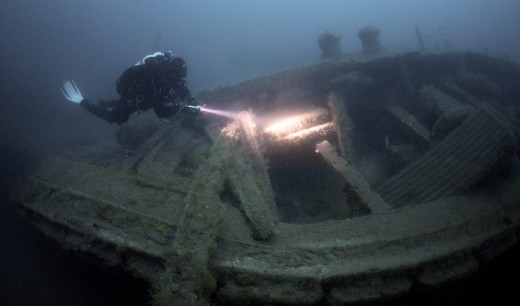
Smyrna Clipper Ship Video
Cutty Sark
The Cutty Sark may be the most famous of Clipper ships ever, enhanced by colorful stories associated with her.
Another part that has added to her lore is where she got the name Cutty Sark in the first place. It was based on Nannie Dee, a character in Robert Burns' 1791 poem Tam o' Shanter. The actual name is Scottish, and means either an undergarment or a short chemise.
The masthead of the Clipper ship was another source of the legend of the company, as it bore an image of the fictional Nannie Dee, bearing long black hair and nothing on her top. She was also holding the tail of a grey horse in her hand.
In the Burns' poem, Nannie Dee, as an adult, wore a linen sark given to her as a young girl;. the reason it was called cutty, which in that time meant being to short to wear.
Add this to several important stories and events relating to the Cutty Sark, and you have an extraordinary tale and history. The first is the participation of the clipper in the tea trade race, as mentioned earlier in the article.
In this case, it may be the most famous race associated with the tea trade ever. The Cutty Sark was competing against Thermopylae in 1872, with the winner guaranteed a bonus.
The two ships started off together in Shanghai, China to London. When passing through the Sunda Strait a couple of weeks after they started off to London, the Cutty Sark lost its rudder. The clipper finally arrived in London about 7 days after the Thermopylae.
What made it so important for the reputation and legacy of the Cutty Sark, was the captain decided to adapt the rudder on the run instead of putting to port to be replaced. The fact that the clipper was only beaten by a week under those conditions was the beginning of its amazing popularity.
Cutty Sark
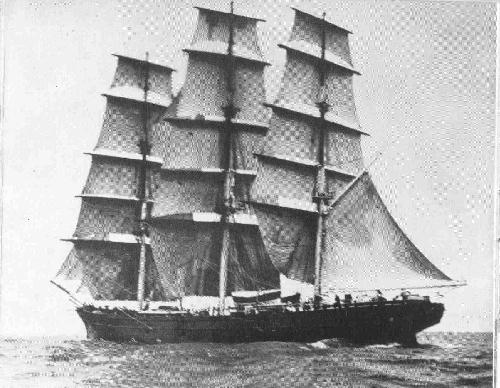
Reason Cutty Sark was Built
It has to be remembered that while the Clipper ships were built to transport goods, they were also built to compete against one another in their chosen markets. That may have been an incentive to get the ships to perform even better for their owners.
Either way, the Cutty Sark was built in 1969 with one specific goal in mind, and that was to beat the Thermopylae.
After that first loss but her reputations still intact, the ship was eventually removed from the tea races made smaller so it could carry general cargo.
As a wool cargo ship, the Cutty Sark began to rebuild its reputation, winning now in the wool race for 10 straight years. Those meetings included a head-to-head battle with its arch-nemesis the Thermopylae.
Murder on the Cutty Sark
One incredible story associated with the Cutty Sark was recorded in "The Log of the Cutty Sark" (Basil Lubbock, 1924).
It tells of the events of the 1890–1891 voyage of the ship, which included an evil mate, which resulted in the crew from London deserting the ship on the first port. Those left on the ship had to be there because they were bound apprentices.
One of them was killed by this murderer, but somehow was able to escape, which instigated a mutiny, whereby afterwards the captain committed suicide in response to the events.
The story gets even more colorful after a new captain is hired, with apparently an even worse mate than the one that had murdered the crew member and escaped. Eventually there was another mutiny, after the new mate murdered another crew member.
Anyway, this is just a small portion of the eventful voyage which added to the fame and legend of this celebrity ship.
It's doubtful there is a more well-known Clipper ship than the Cutty Sark, based on its name, masthead, races won, and the colorful and dangerous events accompanying its historical journeys.
Clipper Ship Tattoo
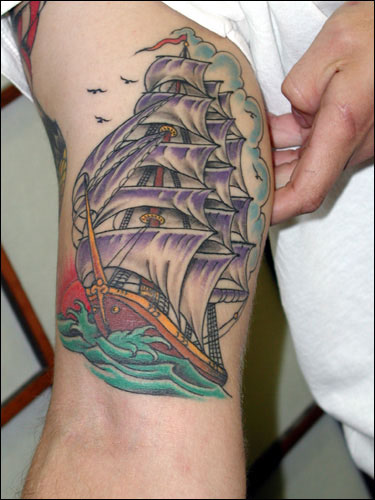
Cutty Sarks Colorful History Continues
Being one of only three clipper ships from the 19th century with original composite construction still intact, the ship and its history continues to garner attention and interest long after it ended its usefulness.
But the drama surrounding the story of the Cutty Sark continues, as she continues to survive after one harrowing adventure after another, including in 1877, which was probably her closest call as far as being lost.
In the Goodwin Sands, she almost got stranded when sheltered there during a winter gale. She rammed into a couple of ships before getting stuck in the mud. A tug pulled her out just before she was stuck permanently.
The latest of the stories associated with the ship was a fire on May 21, 2007, where it iconic ship suffered heavy damage. It is currently undergoing restoration and is expected to be reopened in 2012.
These are just a few of the stories of the Cutty Sark. There were other times it almost went down for the final time through the years, but somehow always manages to escape total destruction or loss.
The End of the Mighty Clipper Ships
Several factors contributed to the demise of the Clipper ships, which was inevitable.
First and foremost was the introduction of the steam ship, which while in the beginning couldn't compete with the Clipper ships with speed, but were more dependable and predictable, in that a fairly accurate schedule could be counted on from them.
Accompanying that technological development, was the opening of the Suez Canal, which completely favored the steam ship over the Clipper, helping them to improve their speed against their diminishing cousins.
Finally, the economic panic of 1857 resulted in a pull back in the use of Clipper ships while steamships continued to be slowly introduced as an alternative. This in itself wouldn't have ended the Clipper, but it did hasten its demise.
During that time the hybrid steam clipper was developed, which contributed to the realization wind power could never be as efficient as the self-powered ships.
Now we're left with a rich history of a time when Clipper ships were the rulers of the sea, and the colorful people and events surrounding that amazing period of time.
Royal Clipper
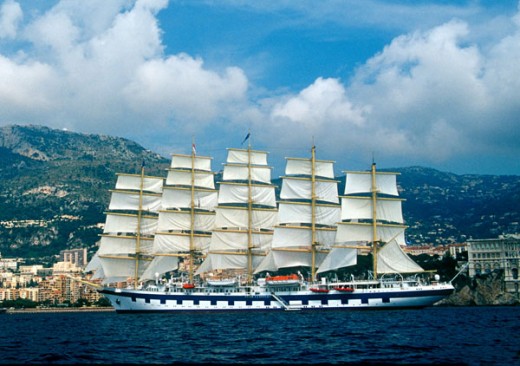
New Era for Clipper Ships?
With that compelling history behind these extraordinary ships, it seems it's impossible to just leave it, and that has prompted the creation of a new Clipper ship; this time for cruises.
The largest of these new ships is Star Clippers' Royal Clipper ship. It is a hybrid like mentioned of the transitory ships above.
Under sail, it can travel up to 20 knots, about the same as the fastest clippers of the past. Powered by its engines, it can reach speeds of 14 knots. The giant ship has 5 masts and 42 sails to get it moving.
Being a cruise ship, it includes all the amenities associated with luxury travel, including 3 pools, a spa, and an extraordinary 3-level dining hall.
Star Clippers claims the 439 foot long ship is the largest "true sailing ship" since the Preussen. It can carry up to 227 passengers. There are a number of other similar ships, but not as large and majestic as the Royal Clipper.
The history of Clipper ships appears to be far from ending.


